Introduction
Isn’t it crazy that 2014 was seven years ago! Seven years since the movie “Lucy” starring, Scarlett Johansson, premiered. Like many, I flocked to the movie theatre to see it. Tell me you did too!?
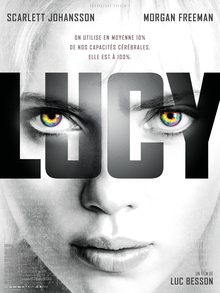
Scarlett Johansson and Morgan Freeman on one screen?! Are you kidding me?!
The movie, which earned millions in revenue, centered around a woman named Lucy who gained psychokinetic abilities after a highly dangerous new drug classified as psychedelic and nootropic, leaked into her bloodstream. As she continued to develop enhanced mental and physical capabilities such as telepathy, mental time travel, telekinesis and even the inability to feel pain, she became adamant about trying to understand her condition and transfer the knowledge she obtained towards research and development. Sounds cool right? I agree it was, but the movie, whilst being a masterpiece, was an occupational, safety, and health (OSH) nightmare and presented several instances where OSH regulations were downright violated, causing potential and actual harm to scores of people. Therefore, in this blog, I’ll seek to shed light on the very real hazards that existed in plain sight all throughout the movie while showing how these hazards could have been avoided through some very real-world OSH safety measures. So sit back, grab something to drink, and come along with me as I delve into the fascinating yet hazardous world of “Lucy”.
Physical Hazards
Imagine you are a mechanic, and you work in a large garage in the city. One day you enter your workplace and notice that there is a stack of boxes right next to your workstation. You inquire about the boxes and are told that it’s some new stock that your boss ordered and decided to put it there temporarily until he found a place to put it. You feel a bit uneasy as you can see that the boxes are tilted, but your boss ensures you that they are well secured and there is nothing to worry about. Suddenly around lunchtime one of your colleagues accidentally gives the boxes a sudden bump which sends them crashing down right onto you, breaking your foot.
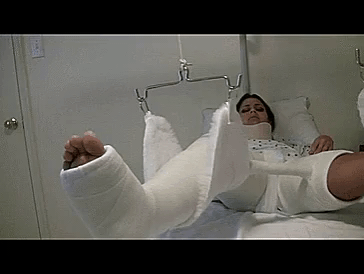
As you scream in pain another one of your colleagues exclaims that the boxes should not have been there because they were a physical hazard. When we think about physical hazards, we think of factors or conditions within the environment that can cause harm to our health (Comcare n.d.), such as slippery floors, exposure to extreme heat or cold, vibrations or improperly securing heavy items at a workstation. They are those hazards that have the potential to cause serious bodily harm. However, these can certainly be mitigated. Did you know that it is the responsibility of both the employers and employees to ensure that the work environment is safe and fit to use? Yes, I know what you’re thinking. How can they do this? Well, Part 2 of the Occupational Health and Safety Act of Trinidad and Tobago speaks to the general duties and responsibilities that employers and employees have to ensure that hazards are mitigated at the workplace and that employees and customers don’t become victims of poor OSH practices.

In fact, Sections 5 and 6 of the Act deal more specifically with the particular physical hazards that might exist and how employers must manage the risks that come along with them. For example, Section 5, Part 2 of the OSH Act stipulates that there should be proper certification by the fire authorities and that a means of fire escape is provided in all establishments. So, let’s take our discussion and point it towards the 2014 blockbuster movie “Lucy”. In this action-centered thriller, there were several scenes and scenarios that offer perfect examples of physical hazards and serious OSH Act violations.
Firstly, one clear example of a violation happened halfway through the movie where Lucy, under the influence of CPH4 – a harmful drug, got into the driver’s seat of a police car and proceeded to drive through the streets of Paris, quite crazily I might add.
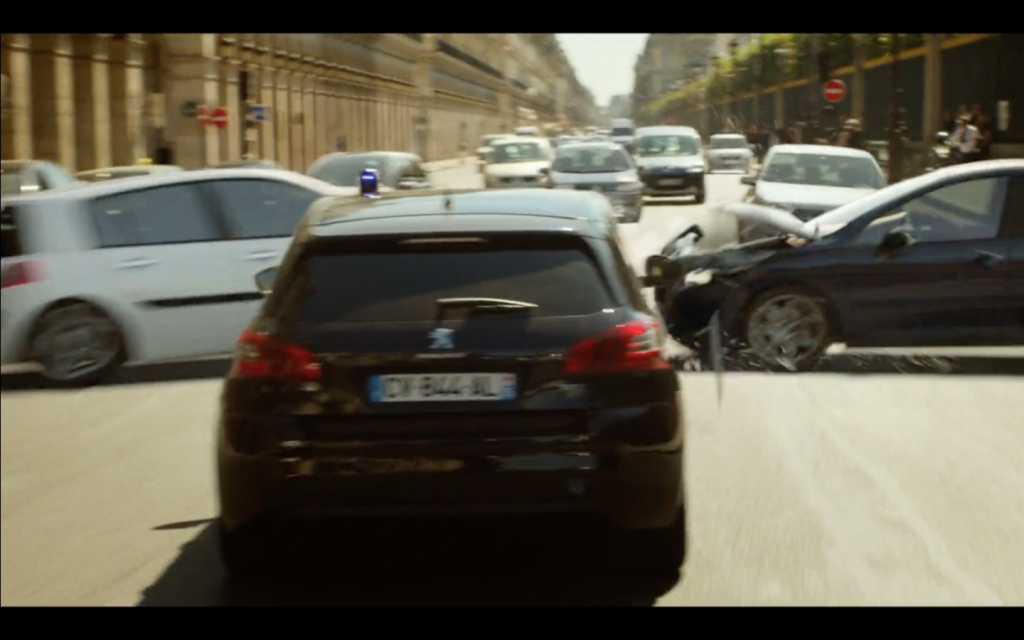
(Lucy 2014)
She was on a mission to arrive at the hospital on time to save the other hostages that were kidnapped and get the chemical that was stored in them and so nothing else mattered. Lucy drove down one-way streets onto incoming traffic, up on the sidewalk and even sped through a crowded street market. I am sure that from reading that description you can imagine the level of chaos that occurred on the streets! Cars were everywhere, hitting each other, trying not to collide with Lucy’s vehicle. Major accidents with potential deaths were also seen. So, how could Lucy have avoided this and limited the potential of a physical hazard taking place? One way could have been Lucy using the siren on the top of the police car more efficiently.

Though it was on, she failed to give the vehicles sufficient time to react, leading to various accidents and collisions. Similarly, given the special abilities, she recently acquired, perhaps using it to her advantage to navigate her way towards the hospital reducing and eliminating all the hazards and chaos she caused should have been something Lucy sorted to do. Outside of these, the signage on the roadways could be described in one word, horrible! I mean just look at the clip below! Not a proper sign in sight!
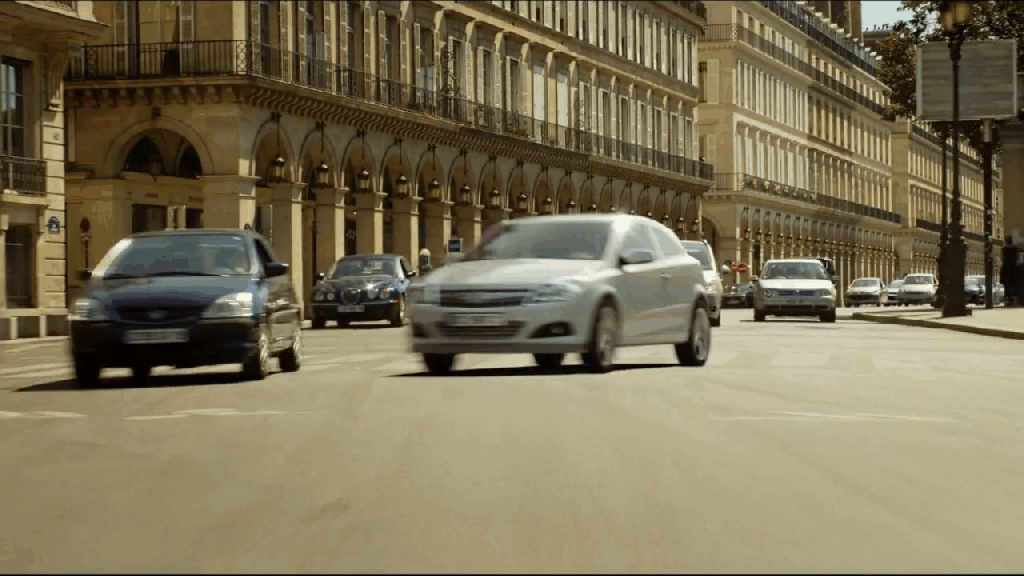
(Lucy 2014)
Therefore, the mounting of safety signs clearly outlining where the car zone ends and the pedestrian zone begins, should have been done.

In this way, Lucy and other drivers could have been aware of where was safe to drive and where was not as they maneuvered through this crazy situation. Imagine with these simple steps, so many things that happened in this scene could have been eliminated! Nonetheless, a keen thing to notice is that there were electronic bollards protecting the street market from contact with vehicles and although Lucy used her ability to pull them down, this is a perfect example of an engineering solution to mitigate the effects of OSH violations.
Believe it or not, Lucy’s troubles didn’t start with her crazy driving. In fact, it started very early in the movie when she was captured by the Korean mafia and then held captive in a room. Here, she experienced harsh physical violence that left her with serious injuries.
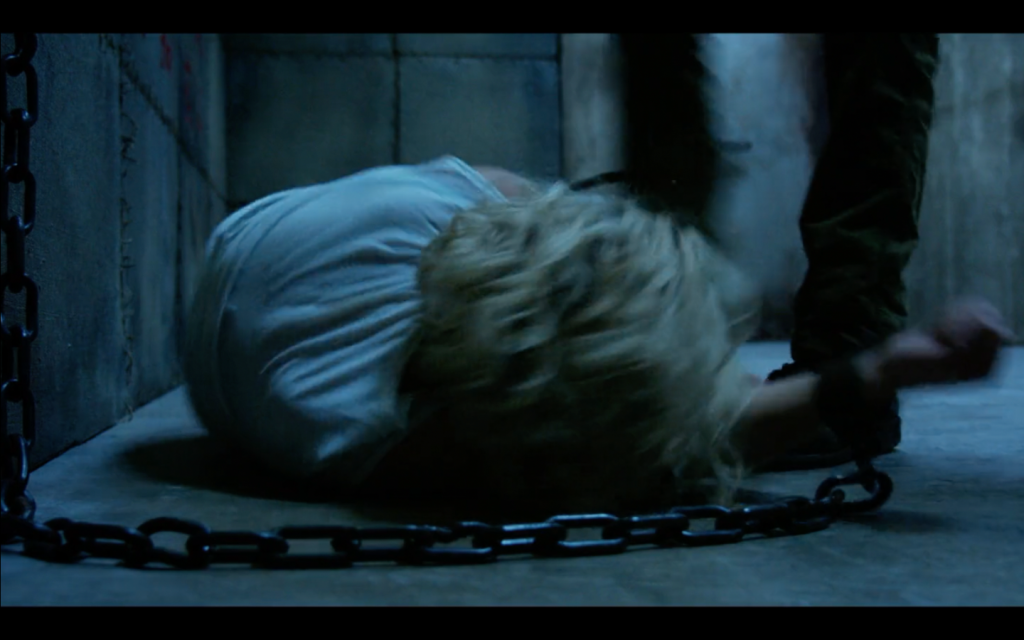
(Lucy 2014)
While oftentimes physical violence is a hazard that is less talked about, trust me, it is just as serious as any other physical hazard. As seen in the clip above, when Lucy was taken to Taipei and locked in a room, there were two men looking after her. After refusing to let one of them touch her, Lucy was kicked horribly in the stomach, leading to the drug packet inside her to tear, spilling into her bloodstream. Think about it for a minute. Someone is kicking you so violently that things inside of you burst! Ouch right? I know!
Physical and other forms of violence affect workers in many different fields and although Lucy’s circumstances were inherently violent in nature, the very real physical impact that can come from workplace violence can be clearly seen. The perfect way to mitigate this type of hazard is through an administrative intervention, as the OSH Act stipulates that employers have a responsibility to create a safe and secure working environment for employees to work and this includes one free of physical violence. Remember we said that there were two people in the room right? Well, as depicted below, this is where the other person in the room could have stood up for Lucy and ensured that his colleague controlled his emotions after being rejected.

Furthermore, the captors’ superiors should have outlined a clear policy as to how to deal with captives and stress the need to avoid physical violence as much as possible. In this way, the unnecessary violence towards Lucy would have been avoided and the after-effects mitigated. Evidently then, formulating a workplace violence policy can ensure that instances of this hazard are minimized and properly dealt with whenever they occur.
While the previous examples spoke about hazards that occurred largely outside the workspace, this example that I am about to explain is a perfect demonstration of an actual workplace hazard. During Lucy’s CPH4 transfusion, the lab where this was taking place became consumed by matter emanating from Lucy’s body. Yes, you read that right! The high percentage of the chemical that Lucy took in her blood caused her to connect with matter all around her as seen in the clip below. How cool right?

(Lucy 2014)
During this process as she connected to the computers and any object that had energy, debris was falling, things were crushed and office furniture flew back almost hitting the attending scientists as seen in the clip below.

(Lucy 2014)
Pure chaos, yet again! A whole host of physical hazards were observed as any one of these loose objects could have made contact with someone causing serious physical harm as none of the scientists were in the proper personal protective equipment (PPE). So how do we mitigate this? I am sure you’re thinking there is absolutely no way to stop this! To some extent, you’re right as we cannot stop Lucy from connecting with the matter but hear me out. To mitigate the effects of this very real workplace hazard, a system of guarding could be implemented to prevent falling items from crashing down and causing bodily harm. Proper signage indicating the dangers of the potential hazard could also be well placed to inform employees and others of the risk that exists. In this way, the scientists would have known to avoid certain areas, keeping them out of danger. Additionally, if the scientists were wearing the appropriate PPE at the time, this too could have given them further protection from the hazard. Interestingly, this hazard combines both engineering and administrative solutions to bring about the best result.
I know what you’re thinking. There is no way that there can be any more physical hazards in this movie! I would love to say yes but I just have one more. During the hospital scene, when Lucy was being confronted by the Korean mafia, she quickly and effortlessly used her new abilities to disarm all of them, causing them to prepare for hand-to-hand combat. As seen in the clip below, she then threw one of the henchmen through a wall, yes you read that correctly, potentially causing very serious internal and external injuries.
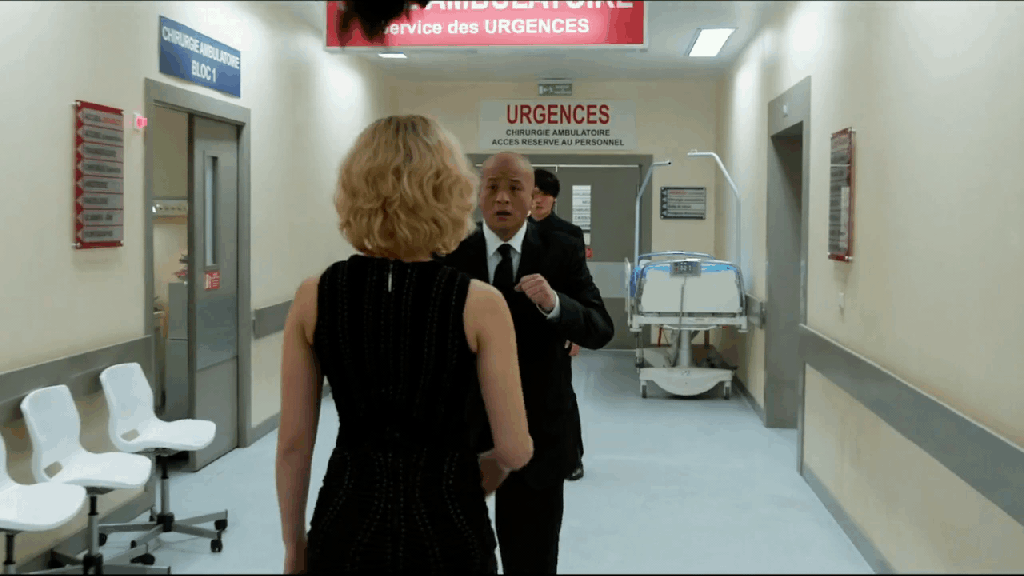
(Lucy 2014)
It was evident that they were all prepared for a battle if it became necessary as they had their weaponry on hand. However, no one thought to also protect their body! I guess they never expected to meet their match with Lucy! However, in a situation like this, the henchmen should have been wearing the necessary PPE to protect his body against any instance where he would have come into contact with hard surfaces. Due to the fact that the henchman’s job is inherently dangerous and his safety depends on what an external force does, the first course of action should be to provide him with equipment to protect himself because any other course of action would be difficult to take when dealing with someone who wants to kill you.
Biological Hazards
Notably from the discussion above, physical hazards are among the most popular and easily identifiable because of their prevalence in our immediate environment. Look at how many we were able to identify just from this one movie! However, there are many other hazards that, whilst not so explicit in our surroundings, pose the same level of risk, or even higher, to our wellbeing. Can you think of any? If you thought about biological, chemical or even psychosocial, you are absolutely correct. However, in this section of the blog, we will focus specifically on biological hazards. Biological hazards also referred to as biohazards, are threats to one’s well-being, stemming from an organic source (living matter) (WorkplaceTesting 2017). They include viruses, fungi, pathogenic microorganisms and much more as depicted in the image below. Okay, so bare with me as I explain some important things about biological hazards to put things into context.
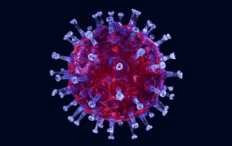
Firstly, when you think about these hazards, think about it as one of these organic sources entering our body. This can happen in one of three ways; through the respiratory system, contact with bodily fluids through an infected individual/thing and contact with contaminated objects (“A Practical Guide Specifically for Frontline Workers Biological Hazards -Prevention and Personal Protection 2,” n.d.). Similarly, the effects of these biological hazards on the human body can also be easily classified into three categories: infections, allergy and poisoning. To help you understand it even further, I want you to think about the COVID-19 virus. This is a biological hazard that has plagued the world today. However, just like with physical hazards, we can avoid the risk of these biological hazards in society and in the workplace by the use of PPE(like masks), social distancing (as seen blow), vaccination, and sanitizing.
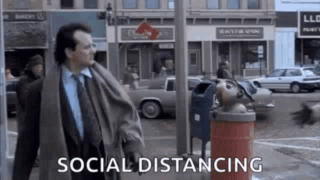
The OSH Act of Trinidad and Tobago (Part 6) even speaks briefly about these biological hazards and protection against it in the workplace. Specifically, section 31 of the Act states “Every industrial establishment shall be kept clean and free from effluvia arising from any drain, sanitary convenience or other sources” (Ministry of Legal Affairs 2006) with the intent to lower the risk of any type or form of threat to one’s well being.
So now that we have spoken about the technical stuff and we understand biological hazards, let’s look at the parts of Lucy where we see these present. The first, and debatably the most unsettling to viewers, was the transplanting of drugs inside Lucy’s stomach with the intention of trafficking. Whilst viewers were not privy to the transplanting procedure at the hotel, the idea of implanting a foreign object into one’s body, is in and of itself, a dangerous undertaking and a major biological hazard.
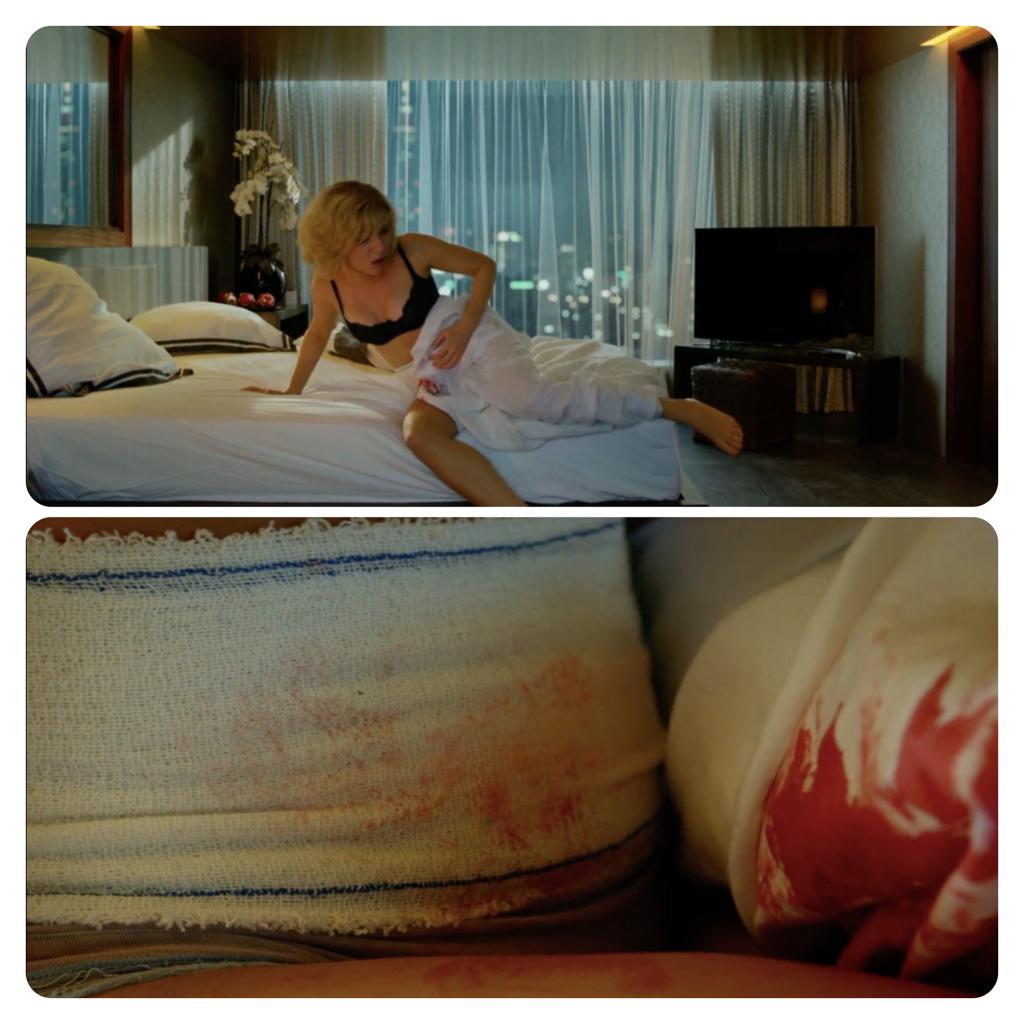
(Lucy 2014)
The Korean mafia would not have been focused on how clean the equipment was, and so the likelihood of bacteria or microorganisms entering Lucy as well as attaching itself to the packet of drugs was very high. I’m sure you can think about how quickly those microorganisms can multiply and cause infections, diseases and viruses. I feel sick to stomach just typing about it to you!
As if this were not enough, after Lucy was physically harmed and the packet burst in her stomach, her only mission was to get that thing out! Guess what she did? Lucy barged into an operating theater while surgery was in progress, threw a patient off the table as seen in the clip below and demanded that a doctor remove the packets of CPH4 from her lower abdomen. Crazy right?

(Lucy 2014)
She went further and pointed a gun to them when they were hesitant, as they should have been. However, the doctor, under the threat of violence, eventually performed the operation to remove the packets from her body. I’m sure you’re thinking this can’t get any worse right? Well, it did. Lucy insisted that the procedure should be done without local anesthesia and that it should be done immediately.
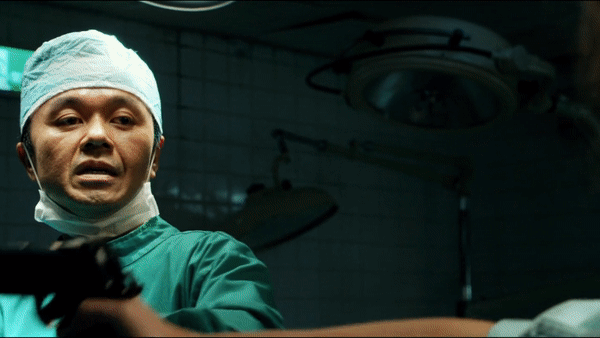
(Lucy 2014)
This meant that there was no opportunity for the doctor to change his equipment or sanitize the tools that he was actively using on the patient that Lucy threw off the bed. These two (2) scenes were gut-wrenching – especially for me. Lucy’s actions presented the risk of cross-contamination and again, the further spread of viruses and diseases. Now, there are very evident ways that these situations could have been combated. Firstly, a series of cleaning needed to be done. All equipment needed to be sterilized and clean, new PPE should have been worn in both instances. Furthermore, the operating theatre should have been cleaned/sanitized which involves, cleaning of the floors (like the image below), the operating table and machinery.

These simple yet extremely important actions would have minimized the risk of cross-contamination. Additionally, whilst we acknowledge that the smuggling of drugs is illegal and that there is no justification for it, the insertion of foreign objects into the human body, aside for medical purposes, is a very intimate and delicate procedure. Proper sanitization and sterilization need to occur beforehand, in an effort to avoid the transfer of bacteria or even pathogenic microorganisms.
Apart from these two gruesome scenes, death and violence were also central themes in the movie. Who would have guessed right? Viewers witnessed various scenes involving the shooting of persons within close proximity to each other and the obvious blood splatter. Now, when we think of blood, it’s not just that red liquid that we see when we cut ourselves. It’s so much more. Blood is a bodily fluid, just like saliva, vaginal secretions, semen and urine. It is an infectious material that requires the execution of special precautionary measures, when in contact with it. With all the chaos already mentioned in the movie, I am sure it is easy for you to guess by now that for the main character and others within the various scenes, none of these precautionary measures were undertaken. Blood splattered across the face of Lucy, as seen in the clip below, after being a couple feet away from a drug addict that was shot in the head by the head of the Korean mafia. This meant that Lucy was now vulnerable to infectious diseases, as the likelihood of it entering her body was high, be it from her mouth, nose or eyes.

(Lucy 2014)
Furthermore, after massacring members of the gang inside their quarters, she proceeded to sit and consume food off their plates as depicted in the clip below. Here, we see her drinking from a cup that someone else used and boldly eating in an area where blood splatter and death just occurred. How gross is that? I mean come on Lucy! Think about the bacteria! I certainly do not have a strong enough stomach to do that! Similar to the first scene where the blood splattered on her face, the exchange of bodily fluids in this scene could have also led to infectious diseases (like COVID-19).

(Lucy 2014)
We all know how both these situations could have been played out to ensure the safety of everyone. But just so we’re all on the same page, let me explain. By Lucy utilising PPE such as face masks and avoiding contact with potentially contaminated sources, the risk of illness could have been greatly attenuated.
When we think about real-life settings however, organizations are mostly guided by the regulatory OSH guidelines in an effort to mitigate the effects of biohazards. Thus, aside from our examples earlier, they also include proper ventilation including the partial isolation of a ventilated contaminated source (e.g. hospital rooms, etc), proper disposal of biological waste, promote good/ proper hygiene and isolation/ quarantine of infected organisms (such as animals)
Ergonomic Hazards
So we’ve covered physical and biological. There is no way this movie had any more hazards, right? I truly wish I could say no. Apart from the two aforementioned hazards, there were several ergonomic hazards also present throughout this entire movie. So before we get into the juicy details of the movie, in order to ensure you understand what ergonomic hazards are, I want you to think about the following situations and whether or not these happened to you. Have you ever sat on a chair that felt uncomfortable and had no support? How did your back, neck and shoulders feel? It eventually began to hurt right? I am sure you were rubbing your back and neck like the woman in the image below.

But once you got up and left the chair, the pain would have gone away eventually. As we go through life, we often get placed in these situations for short periods of time. Now, I want you to imagine yourself at work, sitting on that same chair for about 7-8 hours a day, 5 days a week. Do you still think the pain would go away as easily as in the first instance? Of course not! This is because you would be constantly applying pressure to this area and eventually, it can lead to serious, permanent injury. The situation described above comes about as a result of ergonomic hazards. These hazards focus on the design and ‘fit’ of the workstation and environment of which an ill-design might lead to employee discomfort, fatigue and injuries. Now why is this even important? Well for one, it puts the employee’s physical health at risk, it lowers productivity and increases employee dissatisfaction. So, employers should be all about “fitting jobs to workers instead of trying to get the worker to fit the job” (Midwest Worker Center Ergonomic Training Project (MWCETP) n.d.). But, how can we make sure that employers identify and remove ergonomic hazards from the workplace? The answer is, by law.

We have been stressing the importance of the OSH Act and mentioning various parts that help to protect the employee within the workplace and the same applies to ergonomic hazards. The OSH Act identifies various ergonomic hazards such as lighting, that employers must take into account when designing the workplace, (Ministry of Legal Affairs 2006) in order to ensure ergonomic hazards are mitigated as far as reasonably possible.
So let’s get into the movie now. Where did ergonomic hazards present themselves in Lucy? One of the first instances of this hazard was when Lucy was handcuffed by Richard to the briefcase that contained the drugs. Richard forcefully applied the handcuff when he quickly grabbed her hand which could have caused injury to the area. Apart from that, when Lucy was taken by the Korean mafia, with the briefcase still handcuffed to her hand, she was pushed and jerked around. There was no remorse in the way she was held. Imagine how much tension could have been placed on her wrist while they carried her to the room. In fact, you could have actually seen the pain across Lucy’s face.
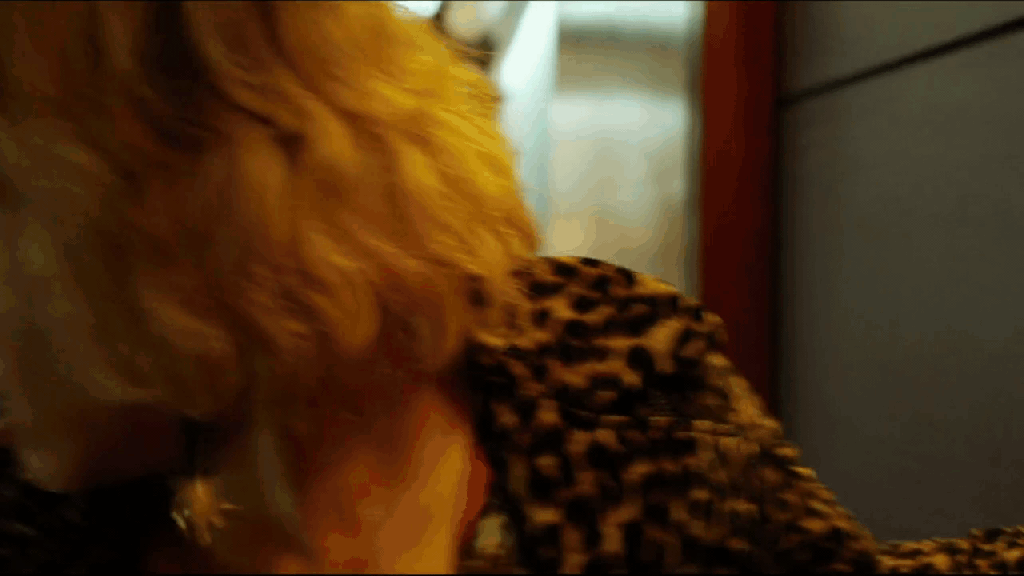
(Lucy 2014)
Now, when it comes to handcuffs being used to restrain persons, there has been a lot of controversy even in the police force. Research has actually shown that when the person that is restrained struggles (which they often do), the handcuffs can tighten around the wrist and cause serious trauma and bruising to those areas on the hand as seen in the image below.
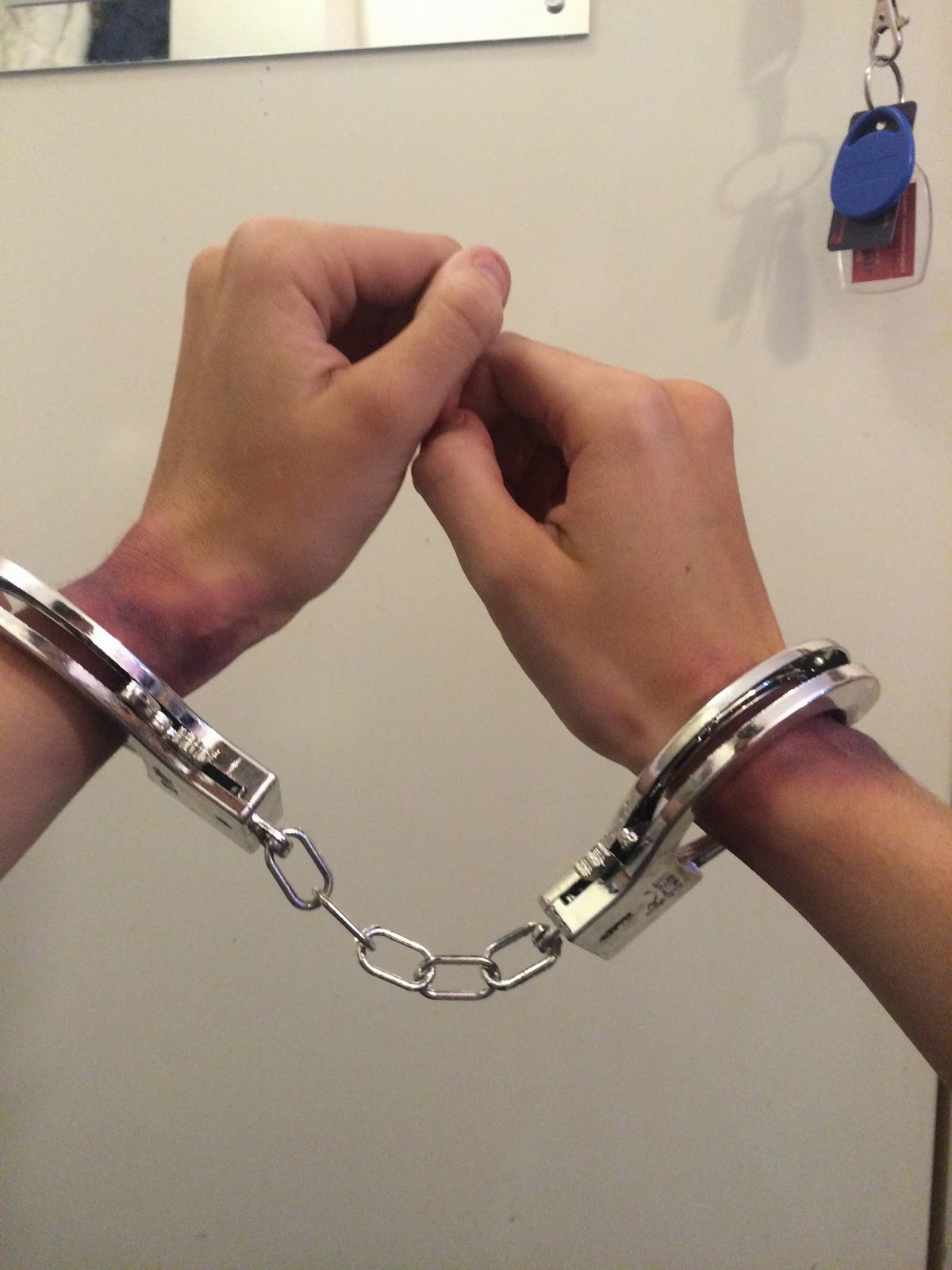
“Fractures, lacerations, and injuries to the radial, ulnar, and median nerves” are often the result of this as well (Haddad, et al. 1999). So how could the situation have played off differently? Firstly, when Lucy refused to carry the briefcase in, Richard should have respected her wishes. I mean come on, this is basic social etiquette! Even if he still wanted her to take it in, he could have at least tried to convince her to carry it in without handcuffing it to her. She should not have been restrained at all. In this way, even if she were to be taken by the mafia, she could have possibly dropped the suitcase and tried to escape. Now don’t get me wrong, in no way am I saying she should have had the responsibility of taking in the suitcase in the first place, but the recommendations presented could have definitely avoided the ergonomic hazard.
I am sure you have noticed the trend by now, so there is no way, the movie only had one ergonomic hazard! This movie was a huge violation of the OSH Act! So let’s quickly move along to another situation. After finding out that there was a professor who specialised in neuroscience, Lucy took a plane to Paris to meet him. En route, Lucy was seen using her laptops, all two of them, typing mercilessly. It was honestly a sight to behold! However, the speed at which she was typing, along with the height of the laptops and the length of time spent on them, was in itself a major ergonomic hazard.
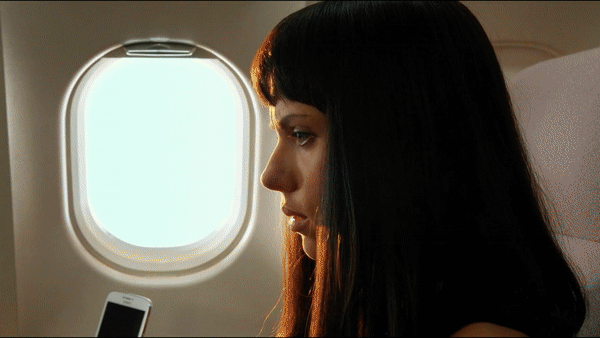
(Lucy 2014)
This one is a popular one that I am sure most of us may have experienced before from being in the situation as Lucy! I certainly have and boy was it painful! For those who may not have experienced this before, let me explain. Typing might seem like an inconsequential activity; however typing too much and too fast and at too low or too high of an angle can lead to something called ‘carpal tunnel syndrome, which is pressure on a nerve in your wrist.

You probably heard this term before, right? It can cause tingling, numbness, and pain in your hand and fingers as well as severe nerve damage (Coastal Empire Orthopedics n.d.). I know what you’re thinking, ouch! So what could have Lucy done to avoid this? While Lucy had a lot of knowledge flowing through her, she did not have to consume it all at once or at the pace at which she did. She already knew a lot and so she could have been more conscious of the hazard that could have affected her and at least attempt to eliminate the situation altogether by slowing down and adjusting the laptops at the appropriate height. She could have also stopped in between her searches to stretch or massage her hands following the steps shown in the image below.
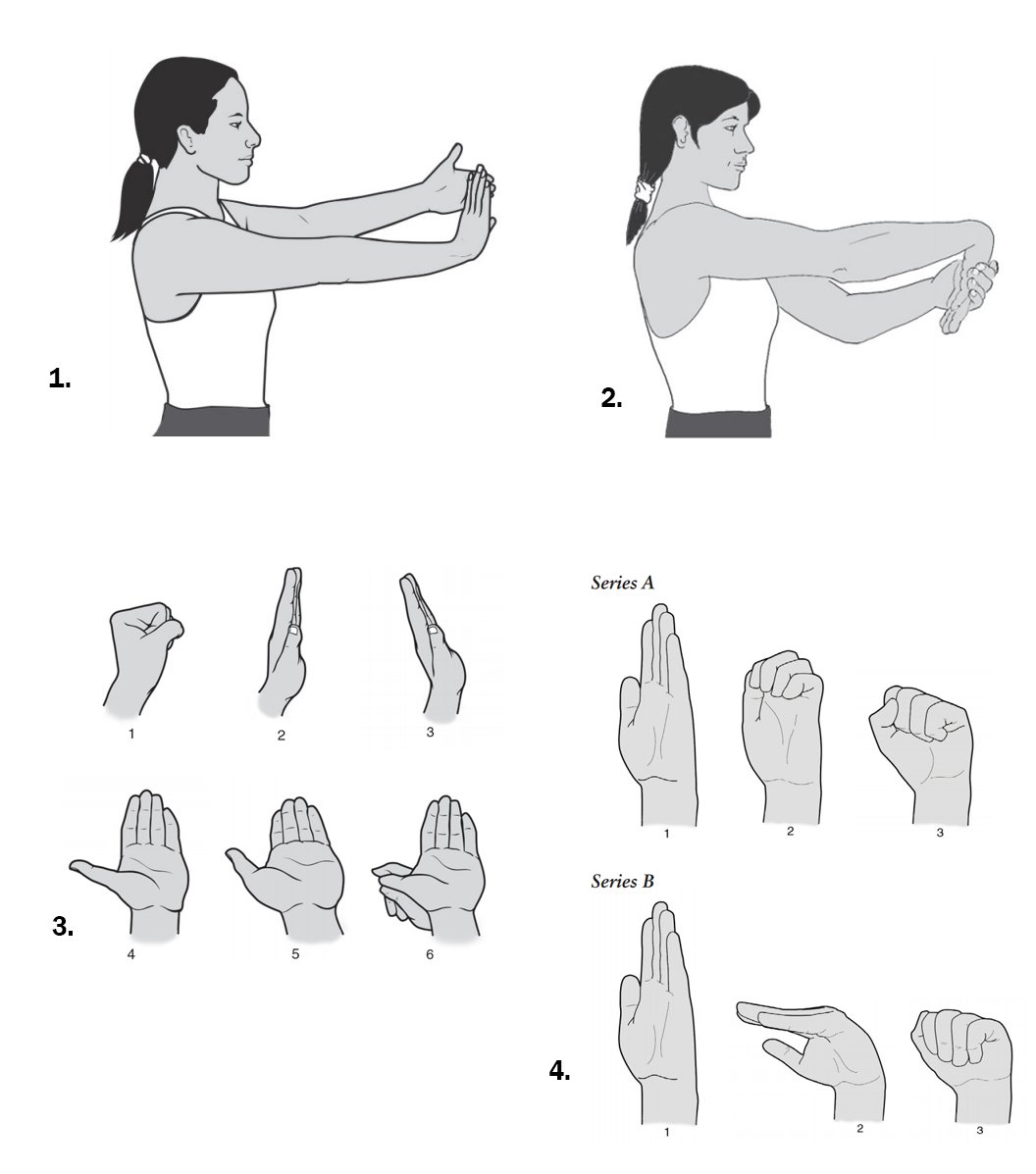
It was a long flight to Paris and so stopping for a few minutes to ensure that her hands got a rest would have been very beneficial to her.
Remember I said that one of the factors that the OSH Act covers for ergonomic hazards is lightning. Well, it is evident that the administrators of the university, in the movie, did not read that part. The lighting of the lecture theatre was poor and could have caused various injuries to everyone that utilized it. The lecture hall was large and it had seating areas on the ground level and on the floor above. Although the ground floor looked like it had sufficient lighting, the upper floor, in contrast, was dimly lit as seen in the clip below.
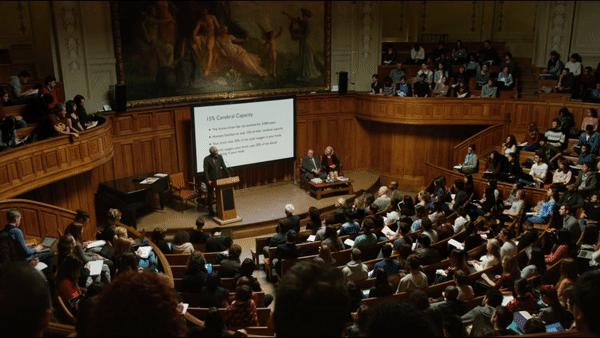
(Lucy 2014)
This would have made it difficult for students attending the lecture to take notes as they may have needed to squint their eyes to see better. Now, generally, lighting hazards can be divided into five categories which are: (1) “insufficient light (2) glare (3) improper contrast, (4) poorly distributed light, and (5) flicker”. In this scene, the lighting of the lecture hall was poorly distributed. You may be thinking that this hazard is such an easy fix and you are very correct. Basically, there are three ways in which this hazard could have been prevented: (1) “replacing light fixtures with ones that distribute some light upwards, (2) painting ceilings and walls in light colours that reflect light, and (3) cleaning ceilings, walls and light fixtures” (Canadian Centre for Occupational Health and Safety 2019). The aim then is to have a lecture hall similar to the image below.

Thus, any of these steps could have been taken in the movie to ensure that the students were as comfortable as possible and that the effects of this hazard could have been eliminated. I know that some of you reading this may not see the importance of mitigating this hazard compared to the others that we have discussed, but a lighting hazard can affect productivity and can cause major damage to someone’s eyes. That is why it’s important for employers not to underestimate this hazard and ensure all protocols stated in the OSH act are followed.
One of the last ergonomic hazards present in the movie occurred closer to the end. Lucy was jerked back through time after she connected with all computers, servers, equipment, and materials in the research room at the University. You may be wondering where the ergonomic hazard is in this scene? Well as seen in the clip below, the chair that Lucy sat on, lacked any type of neck support, and as such, these sudden jolts through time caused Lucy’s neck to be jerked very rigorously, potentially resulting in strain or whip lash.

(Lucy 2014)
Although this may seem like it was not that big of a problem because Lucy did not show any discomfort, we must be reminded that at this point, Lucy was already unable to feel pain. But, regardless of whether she felt the pain or not, the ‘jerking’ movement would have strained her neck and possibly her back. So how could we minimize or mitigate this situation? A very simple solution – utilising a chair with proper neck support.
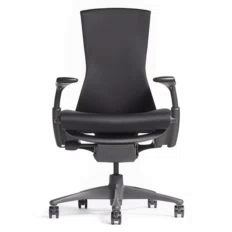
This would have cushioned Lucy’s neck and protected it from the back- and forth movements ultimately limiting the possible damaging effects on her neck. In a work environment, it is also highly recommended that people sit in chairs that have an arm, back, and neck rest (if needed) to ensure comfort, especially if the job requires employees to sit for long hours.
Chemical Hazards
So together we’ve covered physical, biological, and ergonomic and oh boy, they were a handful. We’re almost done I promise. There are only two more very important hazards to cover. Can you guess what they are? If one of them you thought about was chemical, you’re absolutely correct! A chemical hazard is a non-biological substance that has the potential to cause harm to life or health. Surprisingly and rather interestingly, some of these chemicals are a part of our everyday life. Can you think about a few? I’m sure you can! Think about things like bleach, nail polish remover, perfumes, and even insect repellents.

Yes, all these are chemicals that we need to be very cautious around as they have the potential to cause harm to us if not used correctly! But, let’s not worry about that now. We should start with understanding how they can enter our bodies. The most common entries are through inhalation, absorption (through eyes, and skin), ingestion, and injection (Levitt, 2019). This is why, especially in labs, wearing the appropriate PPE as seen in the image below, is of utmost importance.
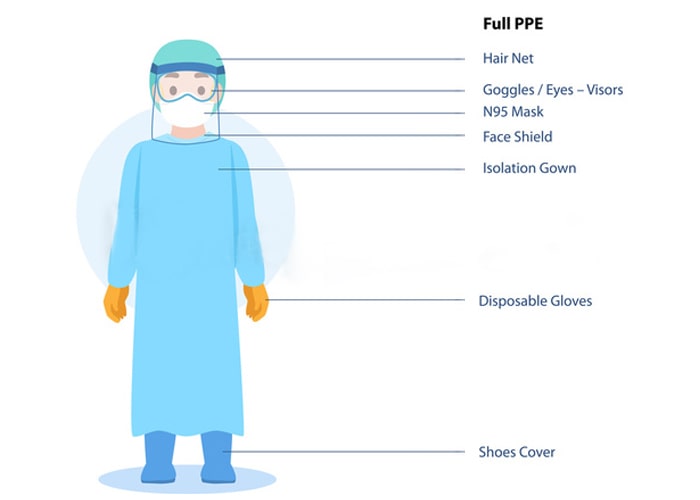
So let’s go back to the OSH Act of Trinidad and Tobago. Similar to the other hazards, there is legislation in place through the OSH Act that protects employees from the threat of chemical hazards. It reiterates that all chemicals must be properly labeled, easy to read and understand, stored properly and an updated chemical safety data sheet must be given to the employee (Ministry of Legal Affairs 2006).
So amidst all the chaos that we spoke about previously, I think you already know that this movie definitely had some chemical hazards in it. Let’s take a look at them and discuss what could have taken place to prevent them. At the beginning of the movie, we were first introduced to the drug that we mentioned before, CHP4, which was stored in the briefcase that was handcuffed to Lucy’s wrist. When the mafia saw the drug, they brought out one of their hostages who clearly looked like a drug addict to inhale it.
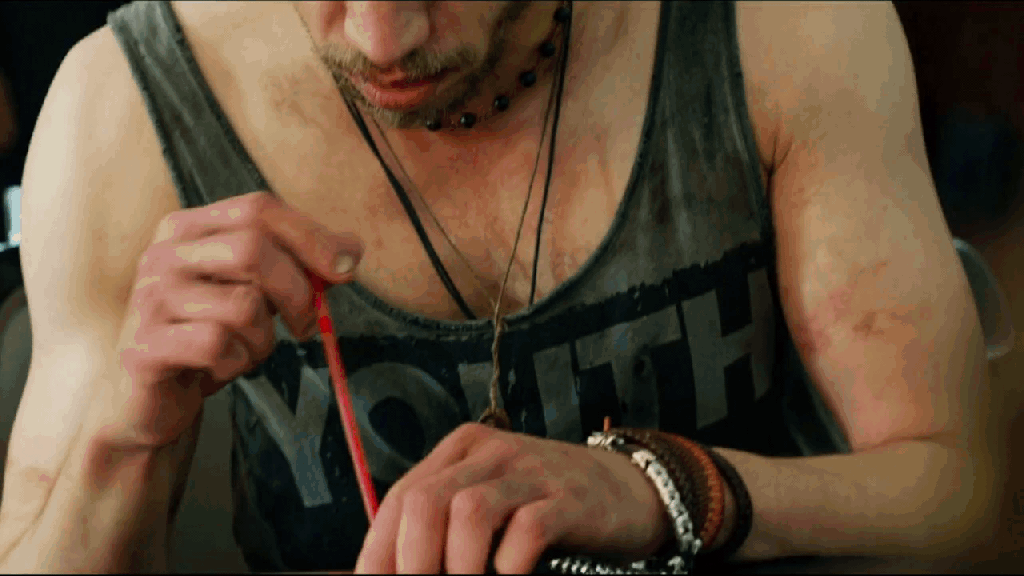
(Lucy 2014)
This was the first instance of a chemical hazard as they were unsure what the drug was and so did not know its side effects. To test this, the addict in the movie was used as their “guinea pig”. Inhaling the drug was definitely one of the worst things the addict could have done as according to the National Institute on Drug Abuse (2011), inhaling drugs leads to death as persons can easily overdose or even die from asphyxiation as your body can react differently to various drugs. The mafia really had no heart or care for anyone but themselves! Talk about evil! When the addict inhaled the drug, he started to suffocate and then began maniacally laughing as if it drove him insane. Now, I’m sure you’re thinking about so many other ways that the mafia could have tested the drug right? Me too! They were clearly rich and had control over a lot of things in the town and so they could have simply taken the packets to the lab or called in their chemist that appeared in the movie to safely test the drug while using appropriate PPE such as gloves and face masks. In this way, the potential threat the drug had on those around it would have been eliminated as the chemist would have been able to isolate it in the lab alone.
Unfortunately, the potential threat this drug had on everyone did not stop there. After using the drug addict as a “guinea pig”, the mafia proceeded to store the packets of the drugs inside Lucy and the other hostages, for trafficking into Europe. I am sure we remember what happened to Lucy with this packet being inside of her but just to refresh your memory, it entered her bloodstream.
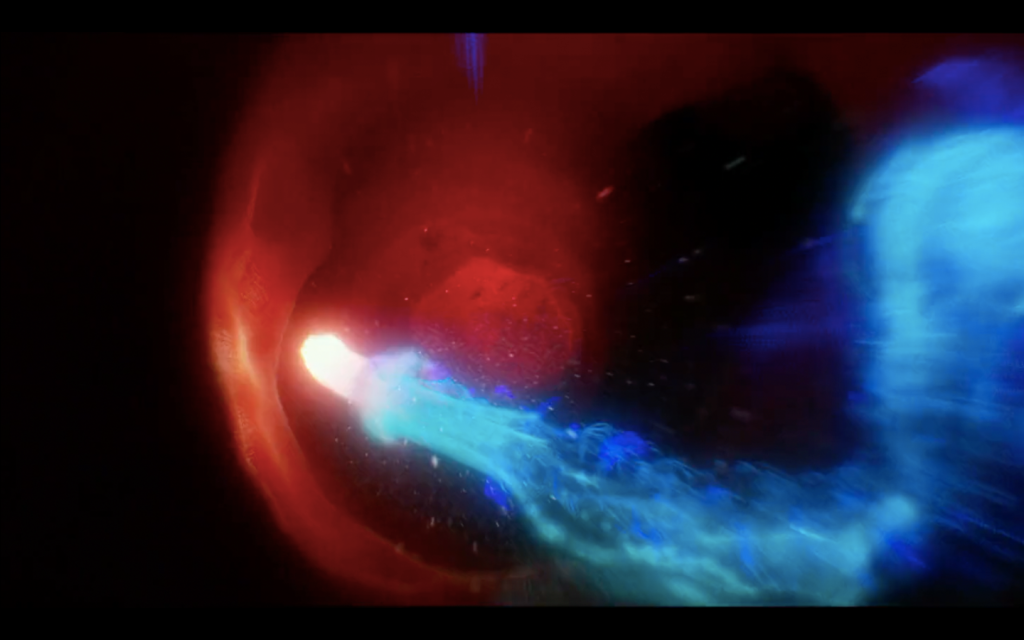
(Lucy 2014)
Now, remember, everyone is different and reacts differently to drugs. Thus, in Lucy’s case, because of the high levels of the drug that entered her, the first initial interaction resulted in her body giving short quick jolts and as it progressed, led to her eyes turning blue. She began to defy gravity (so cool) and started to connect with matters of energy, like the light bulb on the ceiling as depicted below.
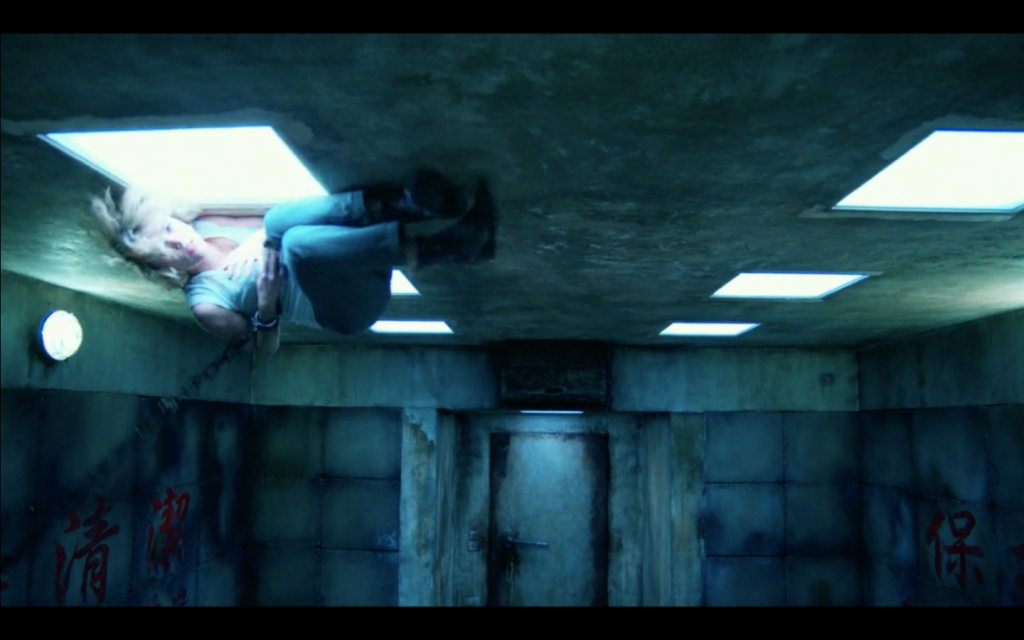
(Lucy 2014)
The scene then cuts when she seems to be in her right mind but also unhuman-like. But boy were we wrong! There was nothing normal about Lucy from that point onwards. As her circulatory system distributed the drug throughout the body, it caused different chemical reactions and started to open parts of her brain that were dormant. Clearly, the drug was taking over her internal system and this caused her to lose a lot of emotions but gain knowledge like never before. While some of us may think that this newfound knowledge is something positive, we needed to focus on the unnatural changes that the chemical is doing to her body. You might also be wondering, how is it possible to have avoided this situation? Well, one of the first things that should be addressed is the fact that the mafia thought it was a brilliant idea to put packets of a drug inside someone’s tummy! I mean, what were they thinking? Now, in no way are we saying that cutting someone open and stuffing a drug inside of them is okay. But let’s say that this was their only option. It was evident that the drug was very important to them as they made every effort to get back the packets from the hostages’ stomachs. Therefore, they should have taken the necessary time to place the drugs in a thicker package like the one in the image below, to ensure that nothing would have caused it to rupture.
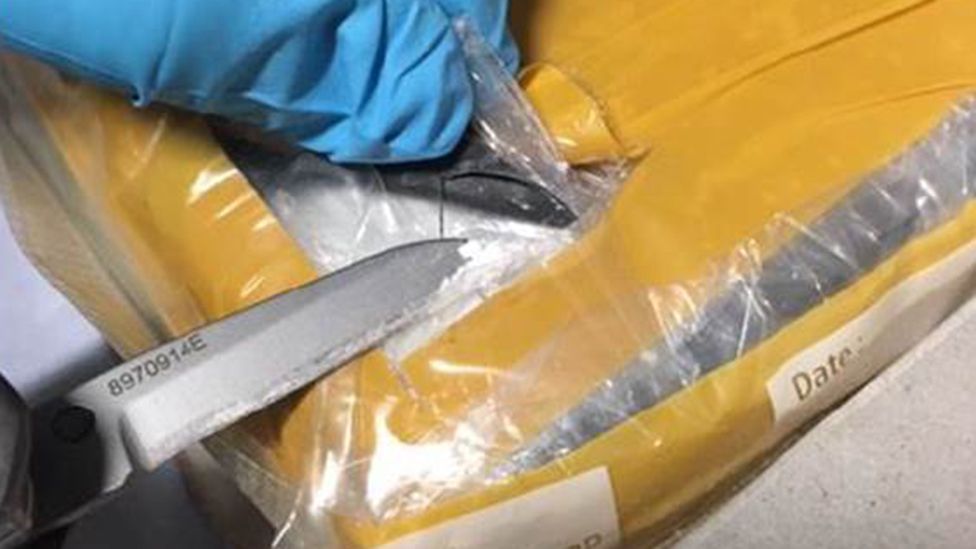
In this way, they would have eliminated any potential hazard and could have been able to get all the packets of the drug when the hostages arrived at their destination. Outside of this, they could have possibly used inanimate objects such as teddy bears or stuffed toys to transport the drugs, instead of humans and in this way, the hazard would have been completely eliminated.
I know what you’re thinking! The hazards in this movie just keep getting worse! Trust me, I could not believe my eyes when I was watching it! One of the last and quite possibly the most dangerous chemical hazards that affected multiple persons was noted closer to the end of the movie. At this time, Lucy had consumed all the packets of the CPH4 drug and was almost at 100% brainpower. As a result of this, she knew that she would not be able to survive and so she was transferring all her knowledge to the professor’s database for him to have. This meant that she began to search for matters of energy all around the lab and started to physically connect with them. Such a cool scene to see her literally turn into a black substance that took over the lab!
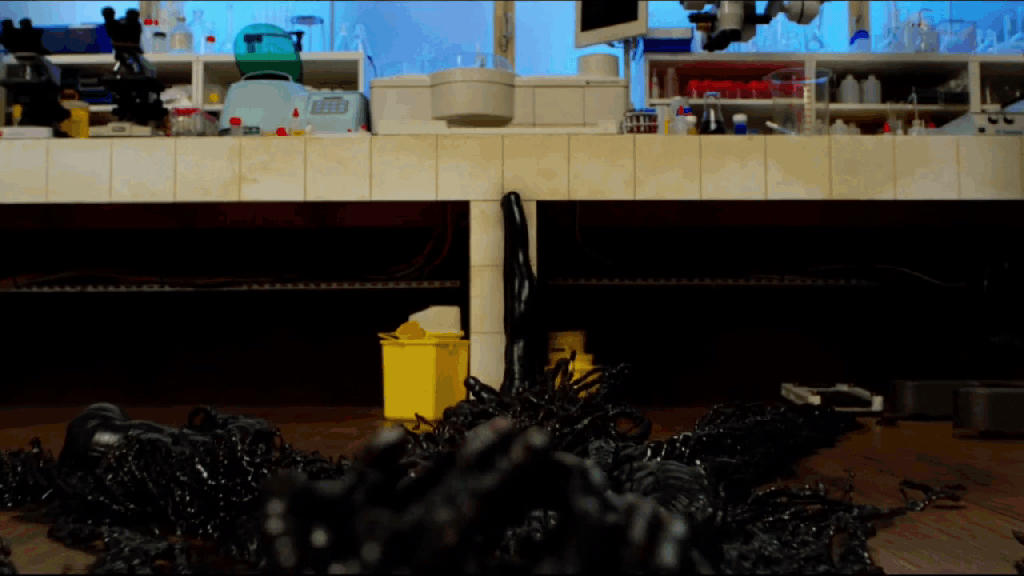
(Lucy 2014)
Talk about a sight to behold! However, it was only fun to look at! Lucy was searching for any form of energy throughout the entire lab and that meant chaos, yet again. Test tubes that were open and contained liquid were thrown onto the floor, the computer wires and servers came crashing down mixing with the chemicals and all of this happened while the professors were in the lab with mediocre PPE on.

While the professors could not control Lucy and what she was doing, a simple step that should have been taken before could have prevented this hazard. Every chemical in the lab should have been well labeled and the test tubes should have been emptied and washed once they were not in use. In this way, while the computers would have still come crashing down, the spread of the unknown chemicals would have been mitigated. Furthermore, the chemicals should have also been stored according to the color code set by the National Fire Prevention Association where every colour represents a certain type of hazard (see image below).
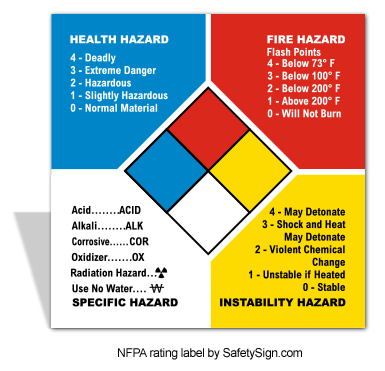
Psychosocial Hazards
Finally, we have made it to almost the end! The final hazard that was present throughout this chaotic movie. Do you have an idea of what it is? Well, we have been focusing a lot on hazards that have the potential to harm the human body in many ways. But have you ever thought about a hazard that could affect someone’s emotions? The truth is there are several hazards that do this. These are known as psychosocial hazards. According to Way (2012), a psychosocial hazard affects the relationship between an individuals’ thoughts and behaviour and their social and work environment.

Thankfully, the OSH Act that has been laid out so clearly for us, covers psychosocial hazards as well and so every employee is protected against these hazards by law. It states, “It shall be the duty of every employer to ensure, so far as reasonably practicable, the safety, health and welfare at work of all his employees”. I know what you’re thinking. Which section of this statement deals with psychosocial? The answer is the welfare of the employee. When you think about the welfare of someone, I want you to think about the happiness and the fortunes of that person. This must be protected at all times as it can in fact affect how well an employee performs on the job.
So, you know the drill. Let’s look at the movie and see where psychosocial hazards could have occurred. One of its first instances occurred when Lucy and the other hostages were blindfolded.
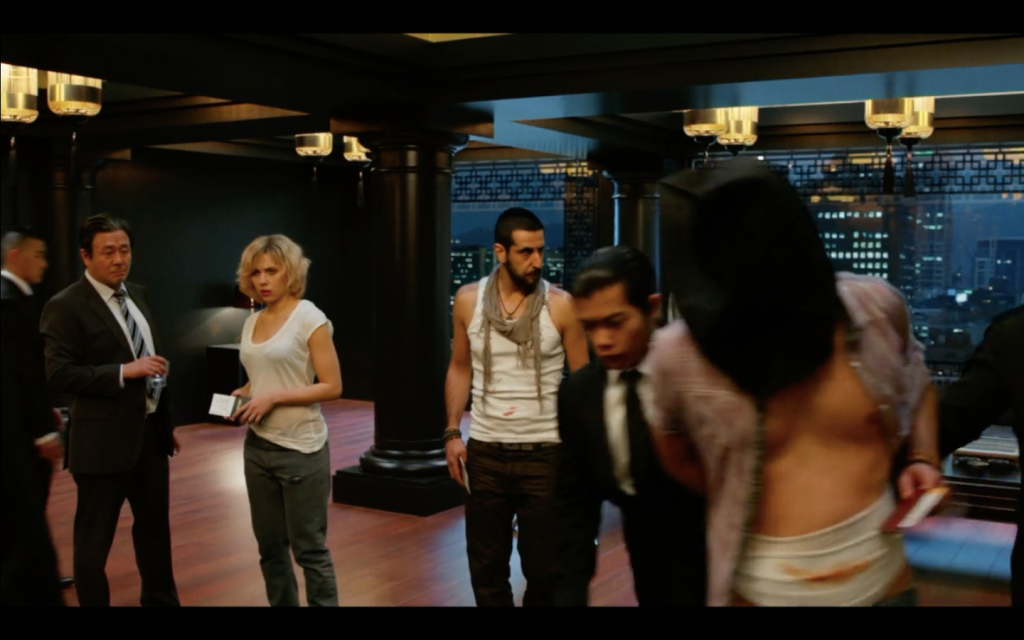
(Lucy 2014)
The covering of someone’s face prevents them from knowing where they are and where they are going. Therefore, it has the potential to create fear and anxiety and may even cause the person to stress out. We clearly see Lucy murmuring to herself while under the covered mask in an attempt to try to relax or stay calm as the feeling of uncertainty crippled her body.

(Lucy 2014)
Take a second and put yourself in Lucy’s shoes. Imagine you were taken by persons who do not speak your language and are evident murderers and you do not know where you would be when the cover is taken off? The thought of this situation already causes my heart to race and so it is evident that the mental and emotional health of these hostages would have been compromised. Now one of the most effective ways that this could have been avoided was through the security of the hotel area. Evidently, the Korean mafia’s presence in the hotel brought terror not only to the hostages but to the staff as well and so this issue should have been dealt with on an administrative level. In this way, the hostages may have gotten a chance to escape once the mafia was caught and could have avoided this horrifying moment in their lives altogether.
Furthermore, after the drug entered Lucy’s bloodstream and opened up more of her brain’s capacity, Lucy stopped feeling pain, love, or affection towards others – displaying very computer-like traits. What do you think is the hazard here? If you thought about the threat that she now is to society, you are very correct. Lucy’s lack of empathy meant that she could cause grave harm without remorse, create situations that may be traumatizing to others, or even engage in activities that may be unusual to others in society. A clear example of this was when she entered the hospital, threw a patient off the surgical bed, and pointed a gun at the doctors so that they would operate on her. Can you imagine how traumatizing that must have been to the doctors and nurses and how that may have affected their performance after? I certainly would have fainted under the pressure similar to one of the doctors in the movie.
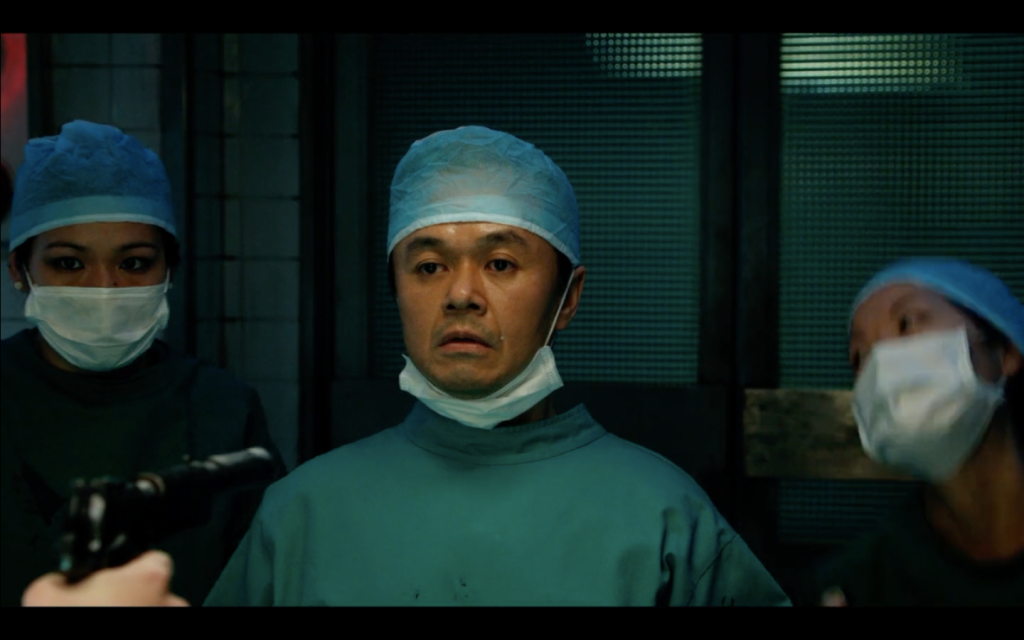
(Lucy 2014)
Now, while there is no certain way of stopping the drug from affecting her brain’s capacity, these two traumatic experiences could have been avoided at the very beginning of the movie. It was clear that Lucy was a bit hungover from the night before as she partied and drank to her content.
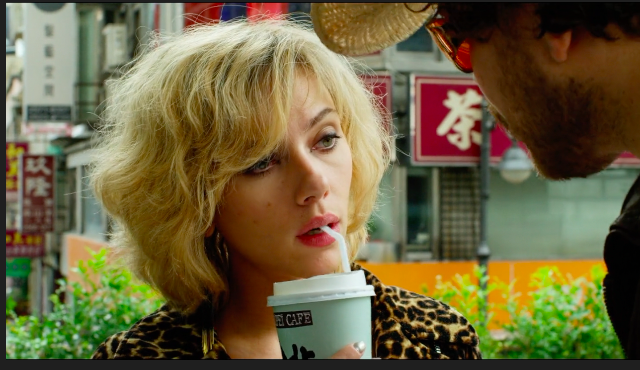
(Lucy 2014)
While socializing and casual drinking is not frowned upon, it did affect her judgment at the beginning of the movie and as a result of this, caused the psychosocial hazards mentioned above to happen! So unfortunate! Furthermore, Lucy was in a new relationship with Richard and thus, a discussion between her and Richard, prior to this, should’ve taken place. By establishing her boundaries with Richard, this very scenario could have played out quite differently for both.
Now I know by now, you have realized that one or two examples of each hazard just isn’t the trend. So yes, you’ve guessed it. There are even more psychosocial hazards to look at. Lucy could not catch a break! From the beginning of the movie when she was forced by Richard, the person she’s dating, to carry the suitcase into the hotel, fear and anxiety consumed her as she was uncertain as to what she was getting into. Quickly after, when the leader of the Korean mafia came to meet her in the lobby, she witnessed the death of Richard and this was only the beginning of the chaotic mess her life was becoming.
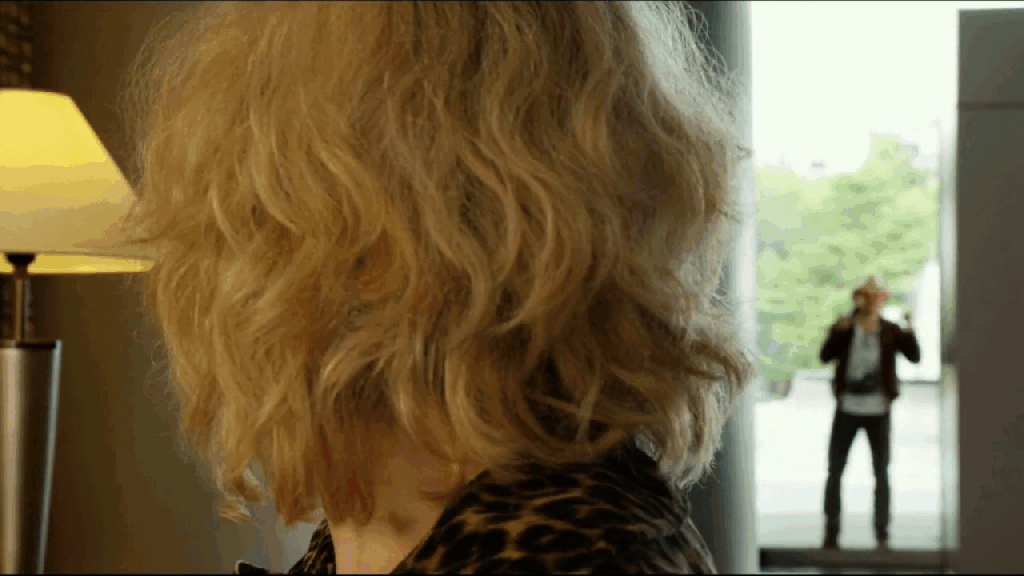
(Lucy 2014)
She was then carried into a hotel room where she saw dead bodies lying on the floor and witnessed the members of the group shooting persons in their heads, should they question or go against what the group demanded.
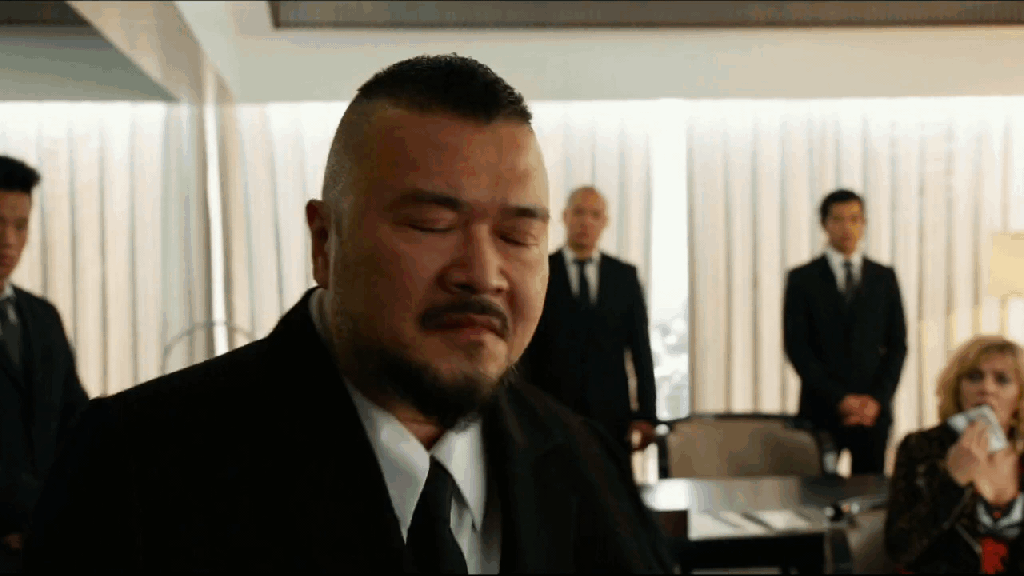
(Lucy 2014)
This constant witness of violence and death would have definitely affected Lucy on a psychological level and it did affect the way in which she would have responded to the leader as well as the activities that she was supposed to carry out. While there is no direct way to stop the mafia from killing persons, when Lucy was kidnapped, she did not make an effort to scream or grab the attention of someone else that may have been in the hotel.

Listen, I get that traumatic experiences cloud your judgment and behaviour, but trying to alert others of her impending danger could’ve potentially saved her. Although screaming or shouting could’ve further jeopardized her safety, perhaps it could’ve been worth it. Don’t you think?
One of the last psychosocial hazards that occurred throughout the movie was observed in the scene where Lucy suddenly approached the Korean leader in a hotel room. Whilst relaxing with his eyes covered, Lucy walked into the room, piercing her knife into both of his hands, pinning him onto the chair.

(Lucy 2014)
From startled to pain and confusion and anger, his realization of what was unfolding before him sent him through a series of emotions. Lucy then proceeded to tap into the information stored in his brain. Imagine someone is taking something from you that is valuable and you cannot stop them? How would that make you feel? How may it affect your overall performance after knowing that this person has such information? That feeling of frustration definitely has the potential to cause stress and anxiety to the person even after the situation took place and we saw this throughout the movie as he was determined to get revenge and to find and kill Lucy. So, how could have this been avoided? When we think about it, the Korean leader was responsible for his own psychosocial hazard as he was the one who wanted to kidnap Lucy in the first place. While we do not condone the smuggling of drugs, if he really needed to get the drugs to other cities, a simple solution to all of this would have been to find an alternative way to smuggle them instead of using humans. In this way, Lucy would not have had any reason to get revenge or to save the hostages and the information that the Korean leader held would have remained secure.
Psychosocial hazards are often overlooked in the workplace as unlike the other hazards mentioned, these cannot be physically pointed out. However, it must be noted that these hazards should be avoided at all times as the effect it has on a person is severe. Psychosocial hazards do not only affect the employee’s performance at work, but can also lead to the development of illnesses that can be compromising to the person’s health. This is why, thoroughly reading the OSH Act’s stipulations on these hazards are equally as important as the other four hazards discussed previously.
Conclusion
So we’ve finally made it to the end. Did you enjoy this hazardous adventure on “Lucy”? Well, I certainly did. Not only was it fun and exciting to act as a critic (as you can see through all the exclamation marks used), I was also able to expand my knowledge on Occupational Safety and Health (OSH) regulations as well as on ways to limit, reduce and avoid hazards i.e. physical, biological, ergonomic, chemical and psychosocial. Although most of the situations presented in this film were an exaggeration of reality, they provided much-needed insight into the world of actual hazards. I hope that everyone who reads this was just as thrilled about the film as me and at least possesses a greater level of self-awareness about hazards in our immediate and not so immediate environment. It is also my hope that employers and employees take the necessary time to read the OSH Act of Trinidad and Tobago so as to avoid all the hazards mentioned in this post as well as others not covered. Remember, safety first!
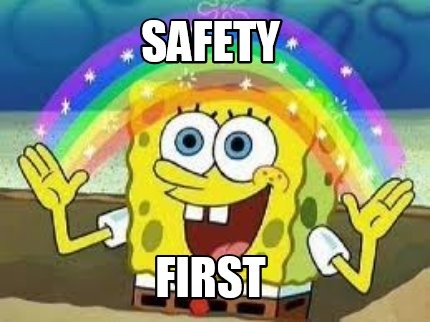
About the Authors
The Mentalists comprise of MSc candidates;
Daniel Floyd
Kezia Huggins
Jenna-Leigh Metivier
Reuel Thompson
Soraya van Dijk
References
———. 2018a. Kid Scream GIF. Digital Image. Tenor. https://tenor.com/view/kid-scream-no-cry-mad-gif-11222953.
———. 2018b. Sentenced Judge GIF. Online Image. Tenor.com. https://tenor.com/view/sentenced-judge-gavel-life-guilty-gif-12475856.
———. 2018c. Sentenced Judge GIF. Digital Image. Tenor. https://tenor.com/view/sentenced-judge-gavel-life-guilty-gif-12475856.
———. 2019. Fred Mopping Floor GIF. Digital Image. Tenor. https://tenor.com/view/fred-mopping-floor-fish-sponge-bob-mop-gif-15629764.
—. 2019. Lighting Ergonomics – Survey and Solutions. October 4. Accessed November 13, 2021. https://www.ccohs.ca/oshanswers/ergonomics/lighting_survey.html.
———. 2020a. Coronavirus Pandemic GIF. Digital Image. Tenor. https://tenor.com/view/coronavirus-pandemic-virus-germs-gif-16660839.
———. 2020b. Office Chair Spin GIF. Digital Image. Tenor. https://tenor.com/view/office-chair-spin-chair-gif-17886829.
———. 2020c. Social Distancing GIF. Digital Image. Tenor. https://tenor.com/view/social-distancing-gif-18675013.
———. 2020d. The Simpsons Bart Simpson GIF. Digital Image. Tenor. https://tenor.com/view/the-simpsons-bart-simpson-anxious-anxiety-stress-gif-19059465.
“A Practical Guide Specifically for Frontline Workers Biological Hazards -Prevention and Personal Protection 2.” n.d. http://www.oshc.org.hk/oshc_data/files/HotTopic/CB959E.pdf.
“Iron Oxide Hazard Summary Iron Oxide.” 2007. New Jersey Department of Health and Senior Services. Accessed November 15. https://nj.gov/health/eoh/rtkweb/documents/fs/1036.pdf.
“Materials Labeling and Signage.” 2021. Environmental Health and Safety. National Fire Prevention Association. https://www.clarku.edu/offices/environmental-health-and-safety/materials-labeling-and-signage/.
“OCCUPATIONAL SAFETY and HEALTH ACT CHAPTER 88:08.” 2009. https://rgd.legalaffairs.gov.tt/laws2/alphabetical_list/lawspdfs/88.08.pdf.
“What Are the Other Medical Consequences of Inhalant Abuse? | National Institute on Drug Abuse.” ww.drugabuse.gov/publications/research-reports/inhalants/what-are-other-medical-consequences-inhalant-abuse.
“What Is a Biological Hazard? – Definition from WorkplaceTesting.” WorkPlaceTesting.com,
123rf. 2020. Online Image. 123rf.com. https://previews.123rf.com/images/waterbangkok/waterbangkok2006/waterbangkok200600009/148635951-lab-technician-in-personal-protective-equipment-ppe-suit-vaccines-testing-of-virus-holding-the-hazar.jpg.
Alarmy. 2021. Online Image. Alamy.com. https://c8.alamy.com/comp/RP3KKR/motorists-move-out-the-way-of-a-sussex-police-car-with-its-blue-lights-flashing-and-siren-sounding-as-it-drives-down-the-a23-near-brighton-east-sussex-RP3KKR.jpg.
Blogspot. 2021. Handcuffs. Online Image. Blogspot.com. https://stratmatters.wordpress.com/wp-content/uploads/2021/11/0c1df-img_5882.jpg.
Bwbx.io. 2021. Online Image. Bwbx.io. https://assets.bwbx.io/images/users/iqjWHBFdfxIU/iLsvH3JlemBk/v0/-1x-1.jpg.
Canadian Centre for Occupational Health and Safety. 2021. Ergonomic Chair. January 7. Accessed November 13, 2021. https://www.ccohs.ca/oshanswers/ergonomics/office/chair.html.
Caribbean Medical News. 2012. OSHA Trinidad and Tobago. Online Image. Caribbeanmedicalnews.com. http://caribbeanmedicalnews.com/2012/10/osha-chairman-resigns/.
ChiroCare Florida. 2021. Back Pain. Online Image. Chirocareflorida.com. https://chirocareflorida.com/wp-content/uploads/2019/02/office-worker-suffering-back-pain-1.jpg.
Cleaeland Clinic. 2017. Carpal Tunnel Syndrome. Online Image. Clevelandclinic.org. https://health.clevelandclinic.org/wp-content/uploads/sites/3/2018/04/GettyImages-857003718.jpg.
Coastal Empire Orthopedics. n.d. Can Typing Cause Carpal Tunnel Syndrome? Accessed November 13, 2021. https://www.jonathanshultsmd.com/blog/can-typing-cause-carpal-tunnel-syndrome.
Comcare. 2020. “Physical Hazards – Comcare, Australia.” Comcare. February 7, 2020. https://www.comcare.gov.au/safe-healthy-work/prevent-harm/physical-hazards.
E Trades Supply. 2021. Online Image. Etradesupply.com. https://www.etradesupply.com/blog/wp-content/uploads/2020/04/1.Full-PPE.jpg.
Family Handyman. 2021. Online Image. Familyhandyman.com. https://www.familyhandyman.com/wp-content/uploads/2019/05/shutterstock_1380910910-Bleach.jpg?fit=696,696.
https://facebook.com/9gag. 2021. Hold Me Back! Hold Me Back! – 9GAG. Online Image. 9GAG. https://9gag.com/gag/apNQPRb.
Gupta, Kapil, Mayank Mehrotra, Parul Kumar, Anoop Raj Gogia, Arun Prasad, and Joseph Arnold Fisher. 2021. “Smoke Inhalation Injury: Etiopathogenesis, Diagnosis, and Management.” https://www.ncbi.nlm.nih.gov/pmc/articles/PMC5879861/.
Haddad, F. S., N. J. Goddard, R. N. Kanvinde, and F. Burke. 1999. “Complaints of pain after use of handcuffs should not be dismissed.” BMJ (Clinical research ed.) 318.
IMDB. 2014. Lucy (2014). Online Image. IMDb. https://www.imdb.com/title/tt2872732/mediaviewer/rm1753992960/.
Lautieri, Amanda. 2019. “The Path Drugs Take Through the Body | Sunrise House.” Sunrise House. https://sunrisehouse.com/cause-effect/path-drugs-take-body/.
Levitt, S. 2019. “Chemical Routes of Entry: 4 Major Hazards – Levitt-Safety.” Levitt-Safety. https://www.levitt-safety.com/blog/chemical-routes-of-entry/.
Midwest Worker Center Ergonomic Training Project (MWCETP). n.d. Identifying and Addressing Ergonomic Hazards Workbook. Occupational Safety and Health Administration, U.S. Department of Labor. Accessed November 12, 2021. https://www.osha.gov/sites/default/files/2018-12/fy15_sh-27643-sh5_ErgonomicsWorkbook.pdf.
Netflix. 2014. Lucy. Digital Image. Edited by The Mentalist. Netflix. www.netflix.com.
Team, GDS. 2020. “3 Flammable Gas Facts You Didn’t Know: GDS Corp.” Global Detection Systems Corp. GSD Corp. January 31. https://www.gdscorp.com/blog/offshore-gas-detection/3-flammable-gas-facts-you-didnt-know/.
Tenor. 2017. Leg Cast Broken Leg GIF. Digital Image. Tenor. https://tenor.com/view/leg-cast-broken-leg-gif-9693590.
Way, Kirsten A. 2012. “Psychosocial Hazards and Occupational Stress.” By Safety Institute of Australia Ltd. Accessed November 15, 2021. https://www.ohsbok.org.au/wp-content/uploads/2013/12/19-Hazard-Psychosocial.pdf?x19450.
http://www.workplacetesting.com/definition/1834/biological-hazard.

November 18, 2021 at 7:10 am
i love the drama in the writing…..made it very interesting to read. good job!
LikeLiked by 1 person
November 18, 2021 at 9:22 am
Thank you so much for your feedback! 🙂
LikeLike
November 18, 2021 at 1:45 pm
Great job! We enjoyed reading the article.
LikeLiked by 1 person
November 18, 2021 at 2:31 pm
Thank you so much! We hope you also learned some good tips on how to avoid hazards and the importance of the OSH Act as well 🙂
LikeLike